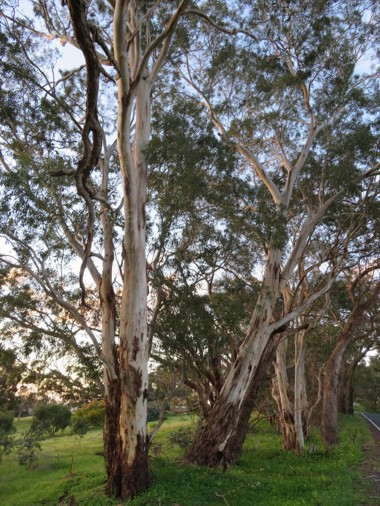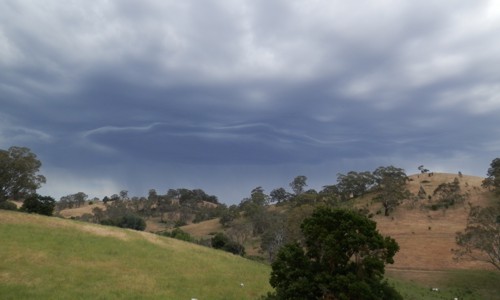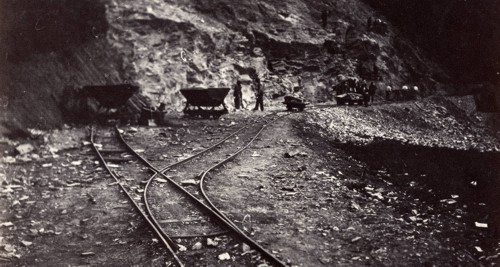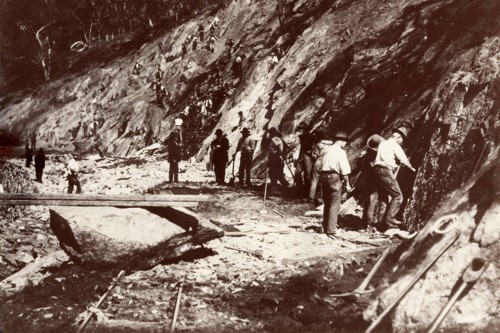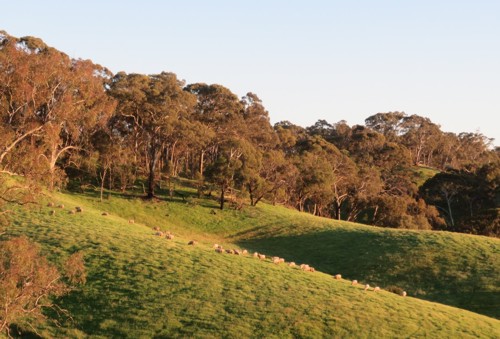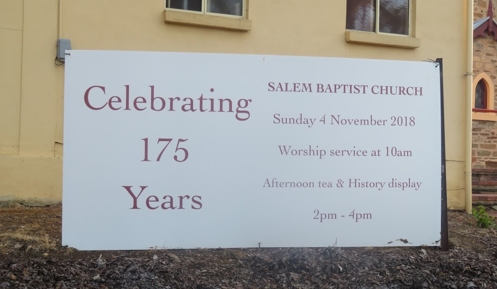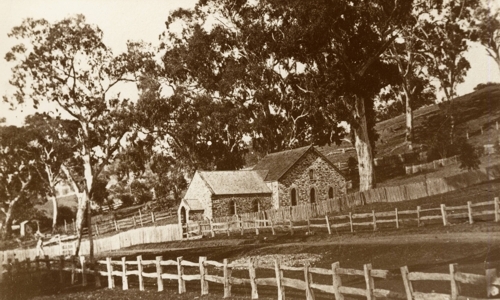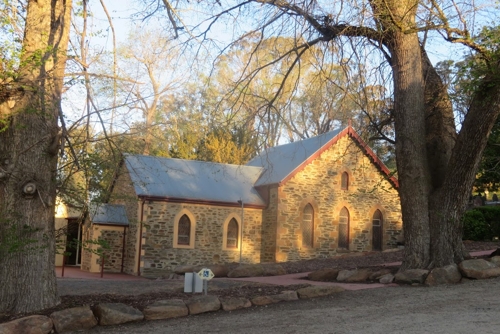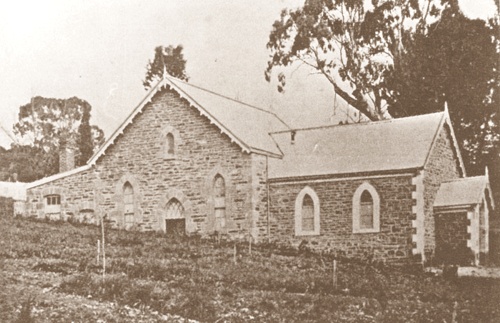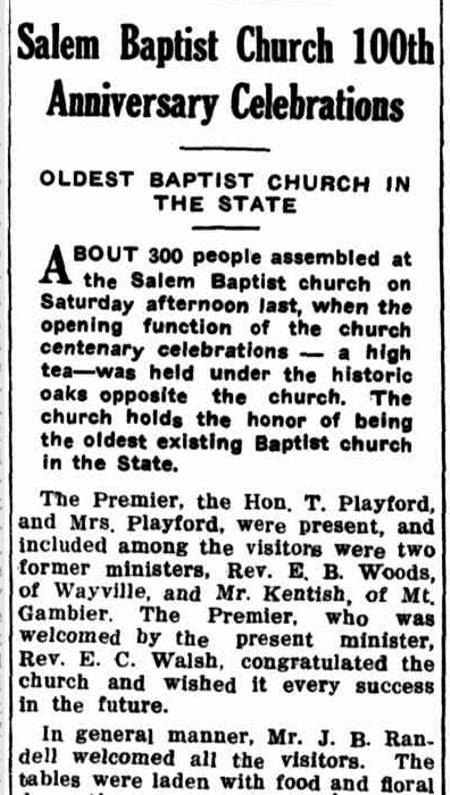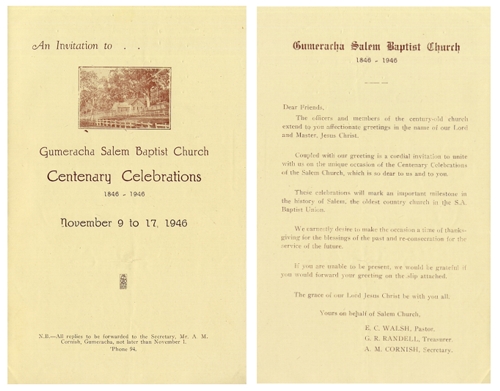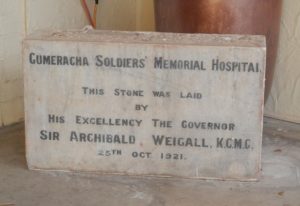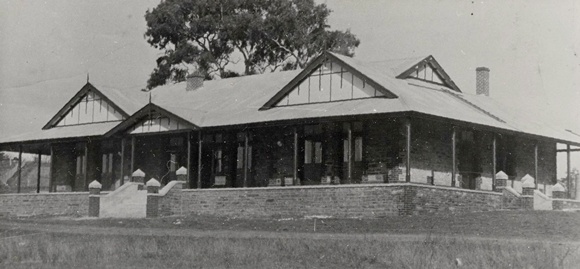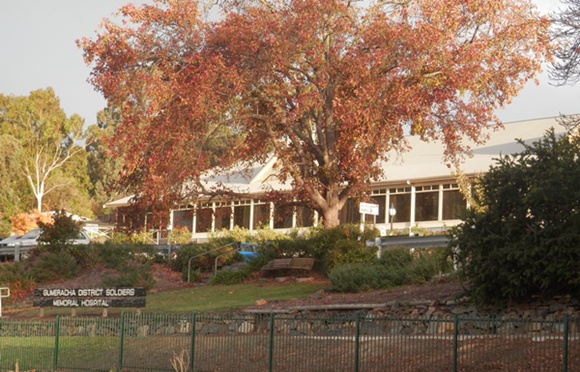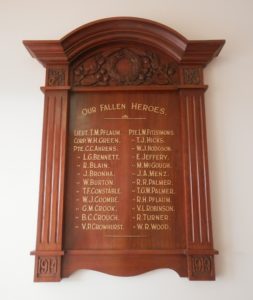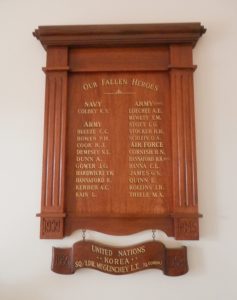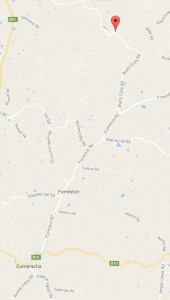The Road to Gumeracha
Anyone who is familiar with the Adelaide Hills knows what a beautiful drive up from the city and suburbs it is. For those who aren’t think rolling green hills everywhere, except in Summer when they’re brown, with plenty of big beautiful gum trees around. There are crops and vineyards, sheep, and cattle. It’s the country, and it’s what I grew up with!
I found an article in South Australia’s Register newspaper, from 20 January 1920, where the writer takes a trip from Athelstone through the hills to Gumeracha, and describes the journey. So I wanted to share a portion of that with you. To read the full article, click here.
An Entrancing Corridor
If an unlabelled moving picture of the Gorge road were thrown on the screen people would ask where it was. The route is an eye-opener in rugged beauty. For most of the 17 miles, from the time the gateway is entered at Athelstone, the track runs between massive, rock-ribbed, tree-spread cliffs which climb hundreds of feet, and seem to meet the blue sky. From the moment you get into contact with the great panorama, it is a wonderland of wild, decorative effects, carried out by Nature to big scale. The road has the appearance of a bold, tiny interloper, twisting in and out among the boulders with flimsy, and almost precarious, audacity. Looking up on one side you see the hills, mottled by shadows on a sunny afternoon, lean their grey bulk against a radiant back ground. On the other the jagged, broken rock offers, at times, a rather uncomfortable proximity, supplying a striking colour contrast with their red and dark blue and brown faces. Running along this 24-ft. thoroughfare, amid some of the most impressive open-air sculpture to be seen in Australia, you involuntarily duck now and then, in expectation of being hit by one of these giant fists. Then, right underneath, flows with placid grace, the little creek, framed in brilliant green rushes or tender fern. When the towering avenues disappear, as it were, into the wings of this magnificent stage, there come through the scattered gums glimpses of fruit gardens, designed as symmetrically as a draughtboard, or arranged in marvellous rows of potato and tomato plants, suggesting the faultless elegance of the top lines in a copy book. So you get on this excursion up the Gorge road, the blend of dainty, man-made utilities and the moving grandeur of God-made scenery.
—An Exhilarating Experience—
The picturesqueness of this 17-mile journey has a unique balance. The approach through the graceful porch of Athelstone is by a road which is like a long key unlocking the hidden treasures. Once inside the traversing of the long corridor is a thrilling experience. The bends are easy to negotiate, with here and there just sufficient swerve to impart an exhilarating feeling. The hills mount in a precipitous stairway, to six or seven hundred feet, but the creek below is within 20 and 30 feet. The whole situation has features calculated to make the driver of a motor or other vehicle keep his wits awake – and judgment on the alert, but ordinary skill and common-sense are all that is needed for a safe passage. There were places which we skirted, at rather a giddy angle – a matter of some inches between a dry ride and a good ducking. This is easily the biggest thing in roads ever undertaken by the department.—Two Official Triumphs—
Millbrook and the Gorge road are two official triumphs. In a sense, each made the other, and this accomplishment of interdependence seems to be sustained in the fact that the track is carrying about seven miles of the pipes. The finest and longest scenic road in South Australia, and the greatest and most elegant reservoir are sister undertakings. It is a singularly happy circumstance. Each picturesque and utilitarian. The people of the metropolitan area want the water, and the producers of the hills need the road. This link with Gumeracha is almost better than a railway, or it will do for the present, at any rate. The market gardeners, Mr. Fleming told me, do not have to guide their horses when they use the gorge highway — they just drop the reins, and the horses and the grade do the rest. It is merely a case of round and round, and through the everlasting hills to the city.— Long and Costly —
Of course, they have been six years building this road. The long war and short money are the explanations. There might have been still further delay, when things got better if Millbrook had not pushed the business on. Adelaide wanted the water. It meant that, for about seven miles, the laying of the pipes and the construction of the track, which was blasted out of the solid rock, had to go hand in hand. It will be 13 months or two years before the road is completed for its full length. The original estimate was £75.000, but the actual expenditure will be nearer £200.000. Everything is dearer. When the Gorge road was started, wages were 8/-a day; now they are 13/3, with a shilling camp allowance. The outlay on materials has also advanced considerably, but the work had to go on. So many as 400 men have been engaged at one time. The road is 3 ft. wider than intended in the first place, and five reinforced concrete bridges have had to be erected: These alone have cost more than £30,000. Each has been given a local name, by which they will be familiarly known. The structures combine beauty of line with unchallengeable strength.— Rugged Corridor —
We motored over the entire distance, entering the rugged corridor at Athelstone, and finishing at the old Gumeracha Bridge after a journey which was a feast for the eye and a tonic for the body. We saw gums, red, and blue, and white, in all the glory of their own stately grouping, and passed masses of the young stuff the colour of saltbush. Alternating the heavy beauty of the towering cliffs was the ordered grace of nestling gardens, tucked shyly in the gullies, or scaling the lower slopes. The sun glistened on the young leaves, and painted birds sang and danced in their own fairyland. Then, on the homeward journey we skirted sparkling Millbrook whose waters played hide and seek among the hills, and spread about with the careless symmetry of a miniature harbour.
Sounds idyllic? It is.
In that last paragraph it says the trip to Gumeracha is “a feast for the eye and a tonic for the body”. And in my words I would say “good for the soul”.
The Oldest Baptist Church in the State
“The oldest Baptist Church in the State” … that was the honour that was given to the Salem Baptist Church in Gumeracha, South Australia back in 1946, when the church celebrated it’s Centenary Anniversary.
And this weekend weekend the little church celebrated it’s 175th anniversary.
Before you all start commenting saying that the dates don’t match up, the beginnings of the church actually date back to 1843 when William Beavis Randell held church services in his barn at “Kenton Park”, Gumeracha. So it’s 175 years from this date.
Then in 1845 he donated land for the church, which was built and up-and-running by 1846.
Australia’s historical newspaper collection, Trove is once again a treasure of information and has a long report on their 100th Anniversary. You can read the full article here.
Not only that, we’re fortunate enough to have an original copy of the program from the 1946 anniversary service …
I have a lot of memories of relating to this church.
It’s where I went to church for many years. It’s where many family weddings were held, and it’s also were many family are buried.
I remember racing around the church (before the current hall was there), and falling over face-first in the mud in my “Sunday best” – my mum was not impressed! I remember the older ladies taking turns to bring flowers each week, and they always fretted about it. I remember the piles of fruit and veg stacked out front when it was Thanksgiving. I remember the Christmas concerts, and the special afternoon teas from time-to-time. I remember the regulars had ‘their seats’ at church, as well as their spots in the car park too.
But mostly I remember what a beautiful little church it was back then, and still is today – although I’m really not a fan of the new hall on the side. Because of where it is you can no longer see the 1846 date engraving on the church wall.
Do you have memories of the church? If so, feel free to leave a comment below.
Anyway I’m sure I’m not alone in being proud that my great great grandpa, William Beavis Randell played such an important role in it all.
Congratulations on 175 years Gumeracha Salem Baptist Church. Here’s to the next 175!!
RELATED POSTS:
William Beavis Randell: The Man Who Created a Town
Anecdotes, BDMs, Obits and Adverts – What Are These Records?
Remembrance Day – Gumeracha’s Fallen Heroes
“On the 11th hour, of the 11th day, of the 11th month
we will remember them”
After more than four years of continuous war, at 11am on 11 November 1918 the guns of the Western Front fell silent. From that moment the “11th hour of the 11th day of the 11th month” has attained a special significance, and has became forever associated with the remembrance of those who had died in World War 1 and subsequent wars as well.
Remembrance Day (sometimes also referred to as Poppy Day) is a day that has been observed throughout the Commonwealth (Australia included) since the end of the First World War, to remember the members of the armed forces who have died in the line of duty.
There wouldn’t be any town in Australia that wasn’t affected by the Great War on one way or another. So many young men, more of often than not eagerly signed up to do their duty. And sadly not all came home.
Gumeracha is a tiny town in the Adelaide Hills region of South Australia. A typical country town, with a population of few hundred (back then), and one where everyone knows everyone. And it was a town that saw its share of tragedy and despair with a number of men who went to fight for their country, and never returned.
Throughout Australia, in the cities and the country towns, the brave men and women were honoured on thousands of memorials and honour boards that were created, so as to “never forget those brave souls”.
Gumeracha certainly did just that. They have honour boards for both WW1 and WW2, and even a small one for the Korean War. But their ultimate memorial is the Gumeracha District Soldiers’ Memorial Hospital.
In the “Gumeracha District Soldiers Memorial Hospital Diamond Jubilee 1922-1982” book it quotes the following …
“Following the cessation of fighting in World War I the local community held a public meeting in the Gumeracha Town Hall to discuss the formation of a war memorial to commemorate the men who had given their lives in conflict … The meeting unanimously agreed that a memorial pavillion would be built and a Committee was formed to plan fund raising efforts for the building. Dr Rex Matters was through Gumeracha about this time as he spoke with both Mr W.J. Hannaford and Mr J.H. Hynes concerning the advantages to be gained if a larger hospital was built in Gumeracha. The two gentlemen agreed that this would have far greater benefits for the community than the planned pavillion. The site selected would bring the building into prominence and give the ailing persons recuperating at the hospital one of the most glorious views of the surrounding area. The hospital was to be built on top of the hill overlooking the town. Mr J.B. Randell, a local grazier and orchardist, was approached and asked if he would sell the piece of land on the top of the hill so that a hospital may be built thereon. To this he agreed, and £100 was paid for the site.”
The hospital was officially opened on 22 July 1922, and is still running to this day. When you enter the hospital one of the first things you see is the WWI Honour Roll, and alongside that is one for the fallen heroes from World War II and the Korean War.
Our Fallen Heroes – WW1
Lieut. T.M. Pflaum
Corp. W.H. Green
Pte. C.C. Ahrens
Pte. L.G. Bennett
Pte. R. Blain
Pte. J. Bronha
Pte. W. Burton
Pte. T.F. Constable
Pte. W.J. Coombe
Pte. G.M. Crook
Pte. B.C. Crouch
Pte. V.P. Crowhurst
Pte. L.W. Fitzsimons
Pte. T.J. Hicks
Pte. W.J. Hodgson
Pte. E. Jeffery
Pte. M. McGough
Pte. J.A. Menz
Pte. R.R. Palmer
Pte. T.G.W. Palmer
Pte. R.H. Pflaum
Pte. V.L. Robinson
Pte. R. Turner
Pte. W.R. Wood
Our Fallen Heroes – WW2
Navy
Colbey, R.S.
Army
Bleeze, C.C.
Bowen, P.H.
Cook, R.J.
Dempsey, N.L.
Dunn, A.
Gower, J.G.
Hardwicke, F.W.
Hannaford, R.
Kerber, A.C.
Kain, L.
Loechel, A.E.
Mewett, T.M.
Stott, L.G.
Stocker, H.R.
Schlein, D.A.
Air Force
Cornish, H.N.
Hannaford, H.R.
Hanna, C.L.
James, G.S.
Quinn, E.
Rollins, J.R.
Thiele, M.A.
Our Fallen Heroes – Korea
Sq/Ldr McGlinchey, L.T.
So while we take a moment in our busy lives to remember those who served, and the sacrifice they made for us and our country, we also think of those in the small town communities who made sacrifices to be able to honour their friends and family who never returned.
Gumeracha is a community town. The hospital was paid by the generosity of those in the community combined with the extraordinary efforts of the fund raising committee. So the Gum hospital was largely built by those in community, for the community – and stands as an incredible memorial to those who never returned.
“Lest We Forget”
Trove Tuesday: “There’s Gold in Them Hills …”
The tiny town of Gumeracha in the Adelaide Hills is well known these days for being the home of the world’s biggest rocking horse, the annual medieval fair, and of course wines. But believe it not, at one stage, Gumeracha was well known for its goldfields.
Many who have connections to the area would have heard of Watts Gully Road at Forreston (previously North Gumeracha), this was one area where gold was, and was first found by James Watts back in 1884. Dead Horse Gully is near Watts Gully Road, and this was another of Gumeracha’s gold diggings areas.
For my Trove Tuesday post, I’ve found the following article which discusses the Dead Horse Gully goldfields … and for someone who didn’t know about them (yes me), I found it fasinating, so thought I’d share it with you. Note: old references to this place list is as Deadhorse Gully (two words), or even Dead-Horse Gully (with a hyphen), current day spelling is Dead Horse Gully (three words). For consistency, I’m using the three word version.
From the South Australian Register, dated Saturday 14 March 1885 …
THE GOLD FIND AT GUMERACHA.
During the last few days large number of men have arrived at Dead-Horse Gully on the gold rush. Now nearly 100 men are working in the gully around Mount Crawford. The rush was so great that on Thurs-day Hill & Co. put on a special coach from Adelaide. The rush is at Mount Crawford, about seven miles north-east of Gumeracha. To get at the field it is necessary to turn off the main road at North Gumeracha-road and to go right through that township. For the first three miles there is a good district road, but after that there is merely a vehicle track through the scrub and rough hilly ground. Deadhorse Gully is about a mile and a half long, and is thickly wooded with colonial honeysuckle. On entering the gully several holes where trials have been made are noticeable. These are in some cases three or four feet deep; in other cases even more. Right along the gully a large number of claims, about fifty, are being worked. These are of various depths. One or two men have gone to a depth of 18 feet before bottoming. The soil is gravelly and patched with black sand in nearly all the claims. In this soil gold is found in a great many cases.The gully runs due east and west, and the whole length has been pegged out. In some cases the men say that they have got payable gold, while others have got simply the colour. One man, who has been working in the gully for three years with his mate, kept the matter quiet, but every fortnight he used to take £8 or £9 worth of gold into Gumeracha. He has been very successful, and has a nugget in his possession weighing 3 oz. Other men have done very well. One showed several nice nuggets weighing under an ounce. He had got all the gold from coarse rough surface. The average depth of the claims before striking the drift is about ten feet. Of course, gold is got at a less depth than that in some places. One man only went four feet before he came on stuff which, when panned, yielded several specks. Some men who have been up several days have been unsuccessful and have cleared out, but their places were quickly filled. Several men are on the road tramping it to the gully. It is considered that there is gold in the drift from the reef on the hill on the north side of the gully. Experienced miners on the ground agree that all the gullies in the vicinity contain gold, and that several abound with gold to quite as great an extent as this. Two or three men have marked out claims in other gullies.
Cabs, carts, drays, wagons, and vehicles of all descriptions are on the ground. There are a number of tents for the men to sleep in, but others are content to lie under trees or to sleep in carts. There are men of all occupations amongst those present — old miners, clerks, cabmen, labourers, several boys, and sailors.
At the East-End Gully there is an indication of a good reef. Some quartz picked, up on the surface showed copper, gold, and pyrites. The great difficulty to contend with in working claims is water. When the men get down ten feet or so water from the hills soaks through this, and has caused the abandonment of one or two claims. Provisions for the camp are brought round by the storekeepers of Gumeracha, but a store in a galvanized-iron structure of about twelve feet by nine is to be opened on Saturday.
On Thursday the Warden of the Goldfields visited the ground, and considers that there is good gold in the gully, but not enough of the mineral for the hundred men who are now on the spot. The whole bottom of the valley has been pegged out. Mr. Hack says that the gullies on either side of this one have gold, and advises the men to spread out. If they do this there is very little doubt but that the industry will get a good start, as the surface is good – so good that he believes that the reefs, of which there are several in the hills around and about, must be very rich.
The samples of ore found are of what is known as burnt ore. It would be very foolish for any more men to go on at present to the gully, as all the likely ground is holed, but the other gullies, to which provisions could be taken daily, offer a good field for prospecting.
Owing to the crude character of the utensils some gold has probably been lost. If the reef is fallen in with at these claims the men will be unable to crush the stone, but none appear anxious to do other than sink surface claims. During the day a large number of visitors go over the ground. The best find so far was a nugget weighing 3 oz.
Fascinating isn’t it, though I still find it hard to envisage just what it was like back then. You can find the whole original article on Trove here.
So there’s just one more little piece of a small town’s amazing history for you.
For those who are not familiar with the term Trove Tuesday, it is a popular theme within the Australian genealogy blogging community, as we browse the Trove website (Australia’s old newspapers that are online AND FREE), find an article that interests us, and write about it … usually on a Tuesday. You can find all of my past Trove Tuesday posts here.


